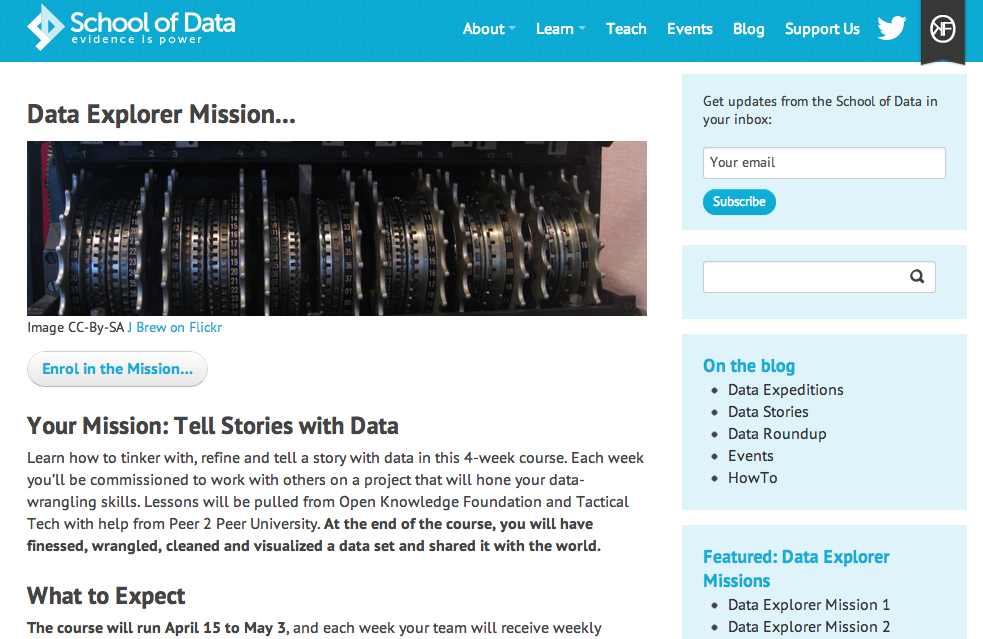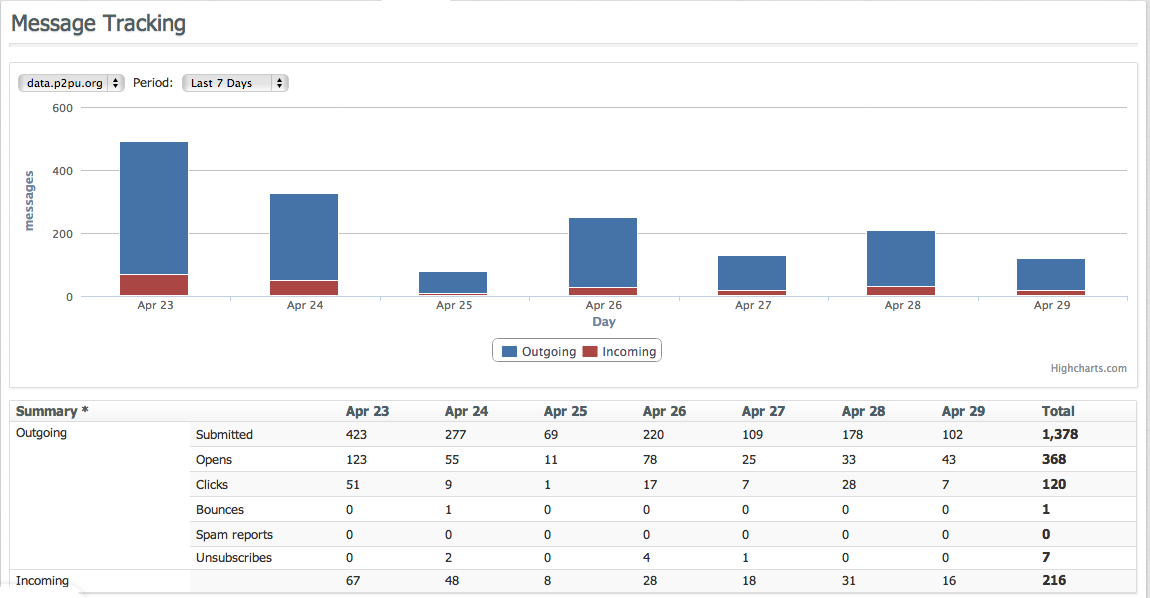At the Cockpit: How the Data Explorer Mission Works
We provide multiple pathways to learning here at P2PU–if visual is your thing, here’s the walkthrough of Data Explorer Missions on our Community Call (start around minute 19:00):
Last year Peer 2 Peer University and the Open Knowledge Foundation launched an initiative to to meet the global demand for data-wrangling skills–enter the School of Data. Over the course of the past few months, Lucy Chambers, Neil Ashton and I designed a pilot “Data Explorer Mission” that we just launched on April 15th. We’re in the third week of that project now, and here’s a window into how it works.
Fast Facts
-
Four-week long course, running from April 15 to mid-May
-
130 signups for our initial pilot
-
Our Mechanical MOOC email grouping mechanism formed 13 groups by time zone
-
The course features 5 Badges on our new platform (http://badges.p2pu.org) and it’s our first time implementing Badges for a Mechanical MOOC project
Learning Design
-
Mechanical MOOC put together 13 groups of 10 learners (or team of “Data Agents”) based on time zone.
-
Each week Data Agents receive 2 emails from “Mission Control”–one email with a project and resources on Tuesday, and one email with directions for their Google Hangout on Friday.
-
The learning project asks Agents to examine a CO2 dataset, ask a question, and then clean, refine, visualize and tell a story about their exploration.
- We designed Badges that directly correspond to those learning goals.
- During the weekly hangout, Agents share their projects, help each other, and reflect on their projects. Data agents take notes on etherpad.
- Facilitation duties change from week-to-week, with folks opting-in to facilitate.
Who is “Mission Control”?
- Mission Control is our persona for the School of Data Mechanical MOOC–think a mix of 007/Bond’s “M” and “Charlie” from “Charlie’s Angels.”
- We’ve been giving a lot of thought to the affective dimension of learning, or how positive feelings in learning situations increase a sense of curiosity or play. Mission Control comes out of recent research on affective learning and engagement through Universal Design for Learning.
- Behind the curtain it’s me, Vanessa, Lucy Chambers with Open Knowledge Foundation and our rockstar data wranger Neil Ashton.
Preliminary Results
- We’ve been using Mailgun to track opens, clicks and replies to the emails we send from [email protected]
- We’ve sent 4 emails so far, so we’re about halfway into the course.
- 131 participants have sent approximately 50 emails to their small groups per day since the start of the course, or 675 emails total.
- Almost every group has had at least one synchronous Google Hangout.
Lessons Learned (Already!)
- Find a clearer way to represent that Data Agents are already in a small group by the time they are contacted. Learners seem unclear about how their small group functions. We need to a.) visualize to the teams who is in their group and b.) give them a sense of “people in the room.”
- We should consider moving Data Agents whose teams don’t take off–maybe these folks form their own team?
- We haven’t mastered Mailgun analytics yet, so Dirk and Vanessa need to thrash around with it a bit longer before we are truly confident in the reliability of the data.
Next Steps
- We’re designing a post-course survey for our pilot teams of Data Agents.
- In another 2 weeks we’ll present summative data, including: number of messages per group, number of click throughs, number of Badges applied for, and number of reviews per application.
- We’re experimenting with the timeline for the course–our next iteration will be only two weeks long–watch out!




Leave a Reply